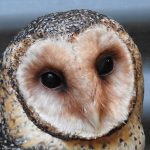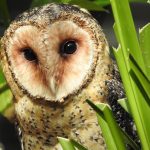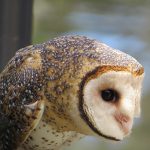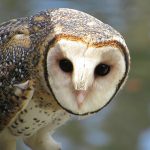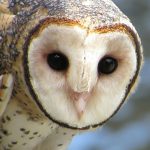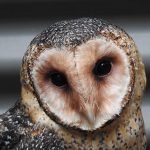MASKED OWL
The Australian Masked Owl is a large and powerful owl species that inhabits various regions of Australia and nearby islands. It is found across Australia, including mainland regions and Tasmania. It also occurs in some nearby islands, such as New Guinea and parts of Indonesia. This owl species occupies a range of habitats, including forests, woodlands, coastal areas, and wetlands.
The Australian Masked Owl is notable for its large size and distinctive facial appearance. It has a heart-shaped facial disc with dark eyes and lacks the prominent facial ruff seen in some other owl species. The plumage is dark brown to reddish-brown, with fine streaks and bars. The name “masked owl” comes from the owl’s facial markings, which can resemble a mask.
Like most owl species, the Australian Masked Owl is primarily nocturnal. It hunts during the night, using its excellent night vision and silent flight to locate and capture prey.
The diet of the Australian Masked Owl is diverse and includes a variety of prey such as mammals (rats, rabbits, possums), birds, insects, and even some reptiles. Its hunting strategy involves perching in trees and swooping down to catch prey on the ground.
These owls typically nest in tree hollows or large stick nests constructed by other birds. They lay eggs, and the female incubates them while the male assists with hunting and providing food for the female. The chicks hatch and are cared for by both parents until they are ready to fledge.
In some Indigenous Australian cultures, the Australian Masked Owl holds cultural significance and is associated with traditional stories and beliefs.
The population of the Australian masked owl on the mainland is declining and several states have placed this owl on the Species Conservation Status list.
In Victoria , the masked owl is a listed threatened bird, and an Action Statement has been prepared under the Flora and Fauna Guarantee Act 1988. In New South Wales, the masked owl is scheduled as Vulnerable under the Biodiversity Conservation Act (2016).
The Australian Masked Owl’s unique features, nocturnal habits, and role in the ecosystem make it a fascinating and important part of Australia’s wildlife diversity.

